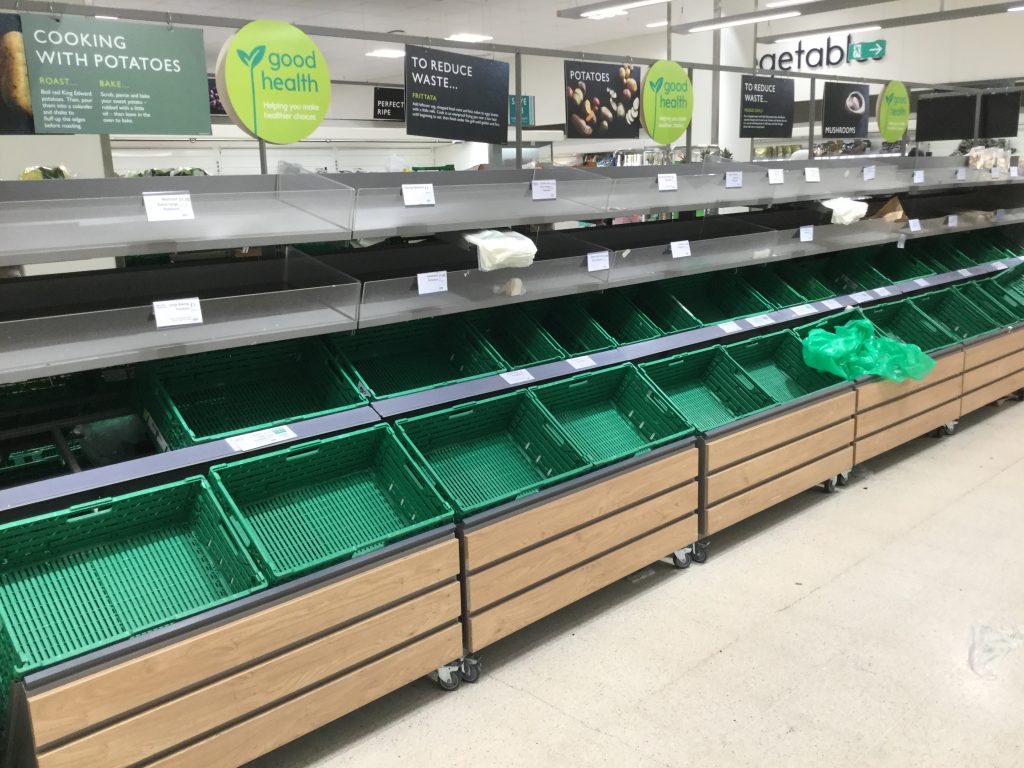I had intended to return to finance for my next blog post, but this morning I heard the latest Freakonomics podcast. It mostly discussed food, but some of what they say applies to lots of things, including the new favourite topic of toilet rolls!
There has been a lot of discussion, both in the media and between people, about the problem of hoarding. Supposedly, people are worried about a forthcoming apocalypse and, to make sure they can survive, are buying up everything they can. Especially toilet roll! Photos of empty shelves are everywhere. And supermarkets have imposed restrictions on many products.

Now this is rational on some level. Someone who contracts COVID-19 has to self-quarantine, which means two weeks at home. We know friends and family will support us, but we still want to be extra sure. Which is all very understandable.
And media loves it! It can provoke fear in people (they are panicking so you should too!). Or snobbery (look at these crazy people!). Or just FOMO. In many ways this is a perfect storm for online media: a risk that is materially affecting everyone’s lives, but gives us all more time to read about it. Reading updates is apparently the biggest extra online activity we are doing!
What if the media narrative isn’t true?
Its such a neat story, that it must be true. Well, maybe not. If we think about things a bit, the truth may be more prosaic.
Social distancing means most of us are spending a lot more time at home. Importantly, we can consuming more things at home. Kids don’t eating school lunches. Office workers don’t get sandwiches. Nobody is going to restaurants.
Ignoring breakfast, we can almost work this out. Basically, anyone who works or is at school has stopped eating 5 lunches out a week. Many also eat restaurants or get carry-outs once or twice a week or more. Now, there are over 9m children in schools and 32.7m workers. While not everyone will eat out quite as much, a large proportion of the population is eating up to twice as much food at home as they used to.
Its not just food that is impacted. Staying at home instead of work or school means that people could be spending twice as much of their waking hours at home. At that mean using twice as much toilet paper too!
The real problem is supply chains
Our crude numbers suggest up to half the population will perhaps consume up to twice as much at home as they use to. That suggests supermarkets need a lot more stuff, which has happened. For example, Tesco has said that sales were up 30% in March. Some of this is a bit of hoarding – toilet roll sales were up 140% – but not as much as the media would make us believe.
So, supermarkets sell much more, but this means supply chains are under strain. Most run lean supply chains, keeping stocks as low as they can. A few days of demand 30% above normal will deplete them. If a supermarket usually carries an extra day’s worth of stock in something, that will disappear after 3 days.
The good news is that it is relatively easily to fix this. If Pret A Manger doesn’t need any bread, it can still be baked but sent to a supermarket instead. We won’t be consuming more. There is enough food and toilet roll out there, but at the moment its in the wrong place. If this lasts any length of time, then supermarkets will sort it out.
How do we fix it when its over?
This does raise an existential question. Since Toyota invented just-in-time inventory management, supply chains have been run for efficiency, not robustness. It is now clear that this is not appropriate everywhere. It may be unreasonable to expect Tesco to hold more toilet roll in stock. But supply chains for critical services, such as health, including the NHS, may need more investment in the future.
Sadly, it isn’t optimal for private businesses to do this and I suspect most will return to normal practice after the crisis. Time will tell whether governments are up for the challenge!